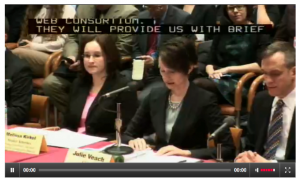On one recent cold morning in Edgewater, seniors lined up outside of the neighborhood’s only food bank, two hours before it was to open.
“This morning there were 37 people in line,” said Tom Robb, director of Care For Real, an Edgewater food pantry open four days a week that has served the neighborhood for almost 40 years. “Twelve to fifteen (seniors) were in line since seven. Just waiting for the food.”
The pantry opens at 9 a.m.
The number of seniors seeking help through the program is booming. In 2007, the organization helped 479 individuals; in January 2008, 1,200; and in Sept. of this year, 3,165 seniors were helped by Care For Real, an Edgewater Community Council (ECC) program, said Robb.
“Their expenses have skyrocketed in terms of medication, healthcare, electricity…. So you have people making a decision between medication and food,” said Rev. Dominic Grassi of St. Gertrude’s Church in Edgewater, who is also involved with Care For Real.
Ginger Williams, director of Senior Services for Edgewater Community Council, reviews case studies and helps seniors in Edgewater who seek services through ECC. She recalls a recent case study:
“A senior got sick and couldn’t work at their job, owned their condo for 14 years, fell behind in payments. The condo association took them to court, and they’re going to be evicted in six weeks,” said Williams. This, she added, is not an uncommon story since the recession began.
Edgewater’s senior population is one of the highest in the city with approximately 15 percent over 60 years of age, according to census data. That’s 9,758 of its almost 63,000 people. What makes Edgewater even more unique is its diversity.
“We have a lot of ethnic seniors, a lot of refugees, and because they’re older they don’t speak English,” said Williams.
But because of this diversity, the neighborhood has come together to provide the majority of funding for Care For Real. Less than 5 percent of its $200,000 annual budget comes from government funds. The Edgewater Community Religious Association (ECRA) has become a melting pot of religious groups in the neighborhood that wish to discuss concerns within the community, said Grassi. And it provides the majority of funding for Care For Real.
“They really haven’t relied on government money. That’s where other food pantries have dried up. You’re not at the the whim of the politicians,” said Grassi.
With the rise in clientele, programs like Care For Real depend on the community of Edgewater for financial support even more. And for now, it hasn’t been a concern, said Robb.
“Just last evening we had a party for the people that have donated over $1,000 last year.
And we had a house full of people. If the numbers keep rising, will people keep donating? That’s the question,” he said.
For now, The Greater Chicago Food Depository supplies 20,000 of the 50,000 pounds of food that Care For Real goes through monthly, said Robb, who makes four trips to Whole Foods and three trips to Dominick’s each week to pick up discounted or donated food. But they could always use more help.
To donate food or clothing to in-need seniors, donations can be dropped off at Edgewater Community Council at 6044 N. Broadway Street.
















Be First to Comment